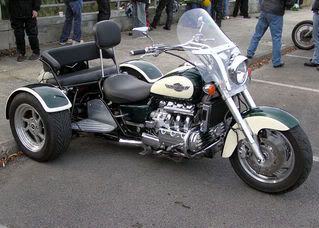
Motorcycle riders in the UK must normally take a one-day Compulsory Basic Training (CBT) course, regardless of which class of motorcycle they intend to ride.[6] In addition a theory test must be taken prior to taking a practical test for any type of motorcycle licence.
Entry level to motorcycling at age 16 is the moped, a motorcycle of engine capacity no greater than 50 cc restricted to a maximum design speed of 50 km/h (31 mph).
At age 17 the rider may have a "light motorcycle" with an engine up to 125 cc and a power output not exceeding 11 kW (15 hp). Only a CBT certificate, obtained within the past two years, and a provisional licence is needed to ride a learner motorcycle with an L-plate. After passing a test on a 125 cc machine, riders will be restricted to ride a "large restricted motorcycle", which has a maximum power output of 25 kW (34 hp). After two years this restriction is lifted and any size or power of motorcycle may be ridden.
For riders over age 21 there is a direct access route to gaining a licence to ride a "large motorcycle" of any engine capacity or power, which allows somebody with no motorcycle experience to train and pass a test in around five days.
Three-wheeled vehicles weighing less than 8 cwt (896 lb / 406 kg) were long classified as motorcycles in the UK and could be driven with a full motorcycle licence. A requirement there be no reverse gear fitted was dropped in the 1960s. This exemption was linked to the enduring popularity of three-wheeled vehicles in the UK (such as the Reliant Regal van) but was abolished for new licence holders in October 2000. Mass-production of three-wheelers ceased in 1998 but the licensing exemption still benefits trikes and their riders.
source:http://en.wikipedia.org/wiki/Legal_definition_of_motorcycle

